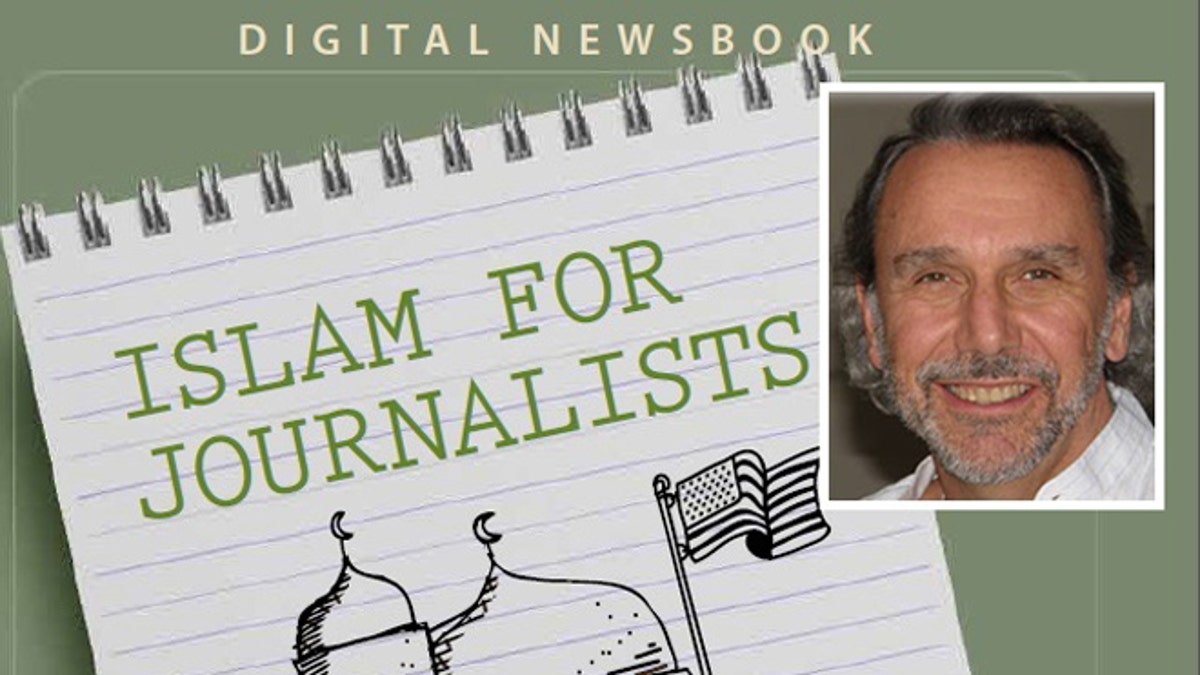
Founding dean of the Edward R. Murrow College of Communication at Washington State University Lawrence Pintak (inset) recently co-edited an e-book meant to be a field guide for journalists when reporting on Islamic issues.
A "how-to" guide published by a prominent journalism school to help reporters covering Islam-related issues is under fire from critics who say it sacrifices the First Amendment to political correctness.
"Islam for Journalists,” an online guide from Washington State University, says coverage of the Muslim world can be fair, yet inoffensive without compromising journalistic principles. Yet it pointedly condemns publication of images of Muhammed, an act which is forbidden by the Koran, and seems to equate it with violence carried out in the name of Islam.
Click here to read "Islam for Journalists"
“Across the Muslim world extremists are wielding their swords with grisly effect, but the pen…can be just as lethal,” Lawrence Pintak, dean of the school's Edward R. Murrow College of Communication, wrote in the introduction to the guide.
“Many Muslim journalists simply couldn’t understand why Western news organizations would republish the offensive images just because [of a legal right]. Journalism is not supposed to be a weapon [it is meant] to inform, not inflame,” Pintak wrote.
The guide has been endorsed by the Council on American-Islamic Relations, a group with ties to extremists in the Middle East.
[pullquote]
In 2005, the Danish newspaper Jyllands-Posten published two editorial cartoons depicting the Islamic prophet, calling the effort an attempt to contribute to the debate about criticism of Islam and self-censorship. Predictably, Muslim groups in Denmark complained and protests took place around the world, including violent demonstrations in some Muslim countries.
Jutte Klausen, a professor at Brandeis University, wrote the book “The Cartoons that Shook the World” about the events, only to see the offending images cut by publisher Yale University.
“My book was censored,” Klausen told FoxNews.com. “The issue was that nobody really understood what the cartoons meant. It was a different dilemma for the media at the time when they were published. No one was prepared for an international media landscape and how something like this could have different meanings for different people.
“After that it became a matter of security,” she added. “But security is often an excuse for censorship.”
Pintak, who did not return requests for comment, vehemently defends his support of press freedom in the guide, even as he seemingly making the case for censorship.
“A commitment to press freedom is in my blood,” he wrote before adding, “Journalism is not supposed to be a weapon.”
The author also seemingly panders to the Muslim faith, explaining in the guide that Muhammad is off-limits because “although he is not divine, he is considered ‘the Perfect Man.’”
“By imitating him, “Muslims hope to acquire his interior attitude—perfect surrender to God," he added, as if such a deep knowledge of a particular religion is required of journalists.
Pintak did not immediately return a request for comment. But some experts supported his position.
“It is true to a degree. There does need to be some sense of moderation,” Kevin Smith, ethics chair for the Society of Professional Journalists, told FoxNews.com. “I do agree that sometimes the way we may cover a story is to create harm, but sometimes there is help in the harm.”
“We understand that sometimes we have to create harm, but it’s based in the intentions of bringing an issue to light," he added. "The real key in ethics is to ask how much can be minimized.”

